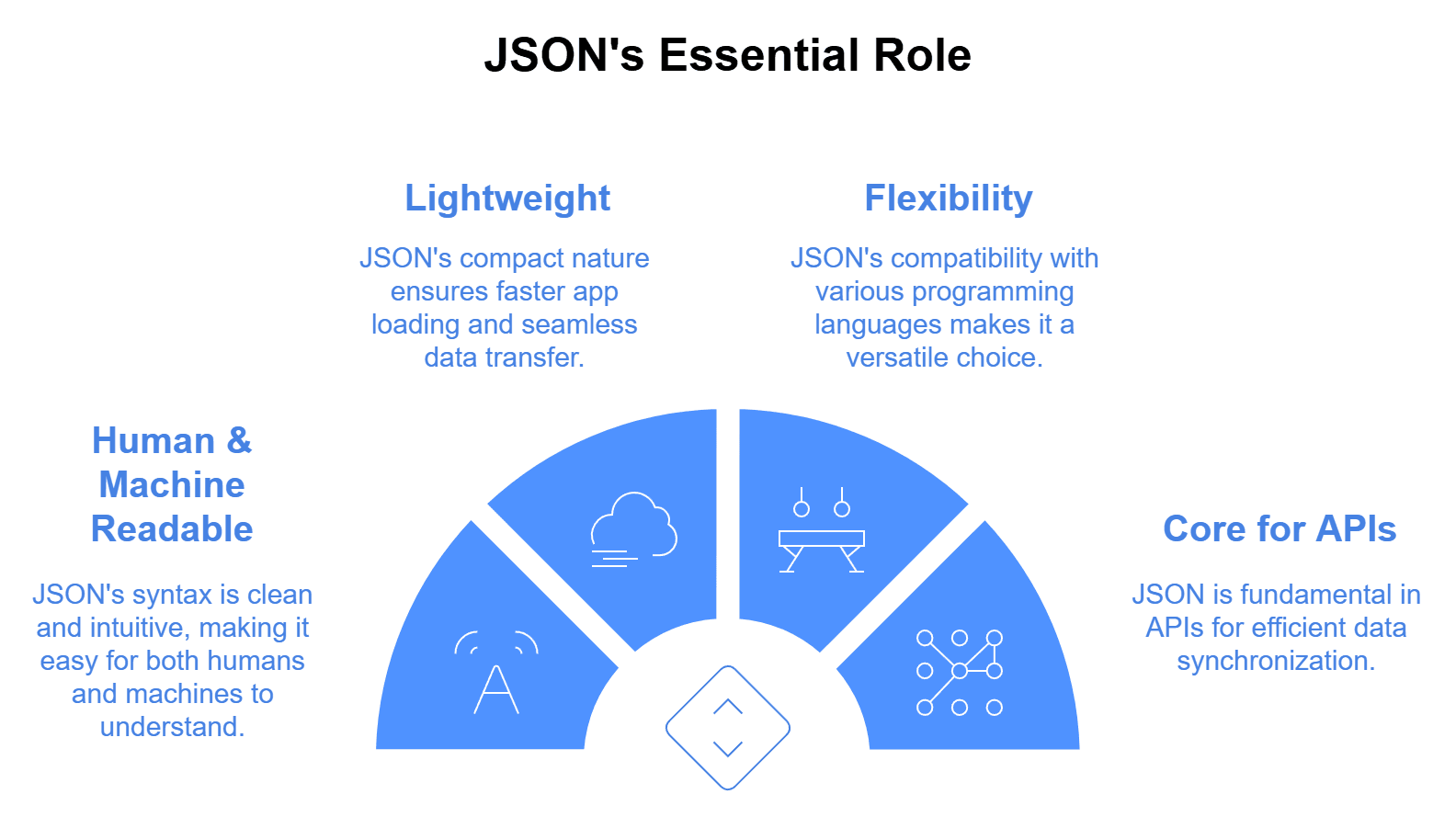Web Development Glossary Terms/JSON
JavaScript Object Notation is a lightweight data format used for storing and exchanging information between servers and web applications. JSON structures data using key-value pairs, making it easy for machines to parse and humans to read. It is widely used in APIs and dynamic content rendering.
JSON’s popularity isn’t just a coincidence — it’s essential for developers in many scenarios.
Here’s how it makes life easier:

1. Key-Value Pairing: JSON is built on a simple structure of keys and values.
For instance:
{
"project": "UI/UX Design",
"status": "In Progress"
}
Here, "project" is the key, and "UI/UX Design" is its corresponding value.
2. Supported Data Types: JSON supports simple data types, including:
3. Nested Structure: JSON allows you to manage highly organized and hierarchical data:
{
"project": {
"title": "Website Development",
"priority": "High",
"tasks": ["Wireframes", "Prototyping", "Coding"]
}
}
4. Language Independence: Despite its JavaScript origins, you can use JSON across various categories of software, from front-end designs to back-end development.
Before JSON became the standard, XML was widely used for data exchange. Let’s take a quick comparison of the two formats:
Whether you’re a junior developer diving into mobile app development or an experienced professional scaling SaaS platforms, JSON is everywhere. Here’s where it shines:
Most modern APIs exchange data using JSON. Whether you’re integrating Google Maps, getting user data from a backend, or syncing items in an eCommerce app, JSON handles the back-and-forth communication.
JSON serializes complex objects so that they can be stored in a database or transmitted over the internet. For example, a JSON object can store user details when building cross-platform apps with services like cross-platform app development.
Many programming environments use lightweight JSON files for application settings. For instance, a frontend framework might use package.json to define dependencies and scripts.
In a UI/UX context, JSON is integral in dynamically populating interfaces — be it fetching product information or displaying live data updates.
Ready to use JSON in your development pipeline? Here’s a quick overview for starting with JSON processing:
Example:
{
"name": "TENET",
"services": ["UI/UX Design", "CRO Audit", "App Development"]
}
Parsing JSON converts its text-based representation into objects or variables in your code. This is typically done with methods such as JSON.parse() in JavaScript.
JSON must be properly formatted. A missing quote or unmatched braces will render parsing impossible, so always validate your JSON using online tools like JSONLint.